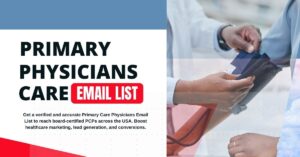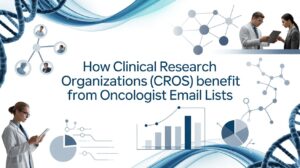Hospitals no longer make purchasing decisions based solely on product features or pricing. Instead, they evaluate potential partners through a strategic lens—seeking solutions that support their internal goals, improve efficiency, and meet strict compliance standards. For B2B providers, this means that entering the hospital market isn’t just about offering something useful. It’s about positioning your brand as a strategic ally, delivering focused communication, and navigating the complex layers of hospital procurement with precision.
If you’ve ever wondered how to market your products and services to a hospital, you’re not alone. It’s one of the most sought-after objectives for companies in the healthcare B2B space. But marketing to hospitals is unique. These are not your average buyers. They are multifaceted organizations led by teams that prioritize operational efficiency, compliance, patient outcomes, and budget responsibility. To win their trust and their business, your strategy must be both intelligent and intentional.
The Hospital as a Buyer: A Multi-Layered Decision Maker
Unlike typical B2B clients, a hospital doesn’t rely on a single decision-maker. Rather, your proposal could pass through several hands before approval—administrators, department heads, financial officers, procurement teams, and sometimes even clinicians. Each of these stakeholders has different concerns. For instance, a procurement officer may be focused on cost-effectiveness, while a department head might be looking for ease of integration with existing systems.
Recognizing the variety of roles allows you to develop messaging that resonates with each type of buyer, addressing their specific concerns and showcasing the value your offering brings to the table. It also helps to segment hospitals by size, location, specialty, and funding type so that your approach is never one-size-fits-all but tailored to the institution’s profile.
Building a Foundation Through Reliable Data
Any serious effort to reach hospitals must begin with quality data. You can’t market effectively without knowing who to talk to, what they need, and how to contact them. That’s why investing in a verified hospital contact database is more than just a good idea—it’s a foundational step. A strong B2B healthcare database provides detailed insights into hospital departments, key decision-makers, purchase histories, and even service-line preferences.
When your outreach is backed by data, your campaigns become precise. Instead of casting a wide net, you can connect directly with hospital administrators or clinical operation managers whose responsibilities align with your offering. This level of targeting dramatically increases your chances of starting meaningful conversations.
Creating Value-Centric Messaging
Once you’ve identified the right people, the next challenge is delivering a message that sticks. Hospitals aren’t interested in flashy pitches—they want proven value. When you market your products and services to a hospital, it’s important to shift your narrative from product features to tangible benefits. Instead of telling them what your platform or tool does, show them how it solves a real problem they face.
For example, if you offer a hospital management solution, rather than highlighting technical specifications, explain how your product has helped similar institutions reduce administrative burden or improve operational efficiency. If you’re selling specialized equipment, showcase how it has reduced downtime or led to faster service delivery. The more you can back your message with measurable outcomes—like cost savings, time saved, or improved staff productivity—the more persuasive your pitch becomes.
Creating a Multi-Touchpoint Campaign
A one-off email or a cold call won’t win a hospital contract. Hospital marketing requires consistent, multi-channel engagement. To build credibility, you need to appear in their inboxes, on their LinkedIn feed, in industry publications, and perhaps even at conferences. Your campaign should evolve over time—growing from awareness to interest to conversion.
Email campaigns remain an effective medium when personalized correctly. Use automation to deliver targeted messages that reflect the recipient’s role and concerns. For example, send operations head a brief case study about workflow improvements, while offering the finance officer a breakdown of long-term cost benefits.
Social media platforms like LinkedIn are also critical, especially when it comes to engaging hospital leadership. Thoughtful posts, articles, and targeted outreach can position your brand as a knowledgeable partner. Direct mail or executive briefing documents can also be effective when trying to reach higher-tier decision-makers with something more tactile and personalized.
Ultimately, each channel should serve as a stepping stone toward building trust and opening doors for deeper conversations.
Establishing Thought Leadership
One way to demonstrate a better Leadership understanding is through content. Producing informative resources such as case studies, whitepapers, and best practice guides not only informs but also reassures your audience. These materials should focus on the problems hospitals face and how your solution plays a role in overcoming them.
Rather than marketing speak, your content should offer practical insights—backed by real-world examples. A case study that highlights a 20% cost reduction for a similar-sized hospital is far more convincing than a generic product brochure. Likewise, a whitepaper on upcoming trends in operational management can position your company as a forward-thinking resource rather than just another vendor.
These materials work well when integrated into your sales funnel. A downloadable guide can capture leads, while a webinar invitation can spark interaction and build rapport with key prospects.
Lead Management and CRM Integration
Hospital sales cycles are typically long and layered. That’s why managing leads effectively is just as important as generating them. Once you’ve captured a lead—whether through a demo request, content download, or referral—your CRM becomes the engine for nurturing that relationship.
Use your CRM platform to segment leads by buying stage, engagement level, and role within the hospital. Marketing automation tools can help you schedule timely follow-ups, deliver relevant content, and remind your team of important milestones or activity triggers.
For example, if a hospital administrator downloads a case study on operational efficiency, follow up with an email offering a personalized ROI estimate. If a department manager attends a webinar, send a calendar link for a consultation. These small, timely touches help keep your brand top of mind and increase the likelihood of conversion.
Converting Interest into Appointments
The final mile in hospital marketing is securing a meeting with decision-makers. This is where all your efforts must converge. Personalized outreach, data-backed messaging, and social proof play a critical role. Use everything at your disposal—client testimonials, success stories, or even peer referrals—to build confidence.
Hospitals are more inclined to engage when they see that your offering aligns with their mission or mirrors successes from similar institutions. Keep your ask simple and valuable. Rather than a generic “let’s connect,” offer something specific—like a complimentary operational audit, a use-case presentation, or a customized implementation proposal.
Approach every touchpoint with the mindset of adding value, not pushing a sale. This consultative approach is far more effective in winning trust and gaining access to key decision-makers.
Ongoing Optimization and Strategy Review
Hospital marketing isn’t static. The market evolves, priorities shift, and new challenges emerge. To stay ahead, regularly evaluate your strategy. Analyze engagement data from your campaigns—email open rates, webinar attendance, content downloads, and meeting conversions.
Use this data to tweak your messaging, update your buyer personas, and revise your content formats. What worked six months ago might need refinement today. And as new regulations or trends emerge, your brand should be among the first to address them—demonstrating thought leadership and relevance.
By adopting a mindset of continuous improvement, your B2B brand remains adaptable, insightful, and well-positioned to serve hospitals over the long term.
Final Thoughts
Understanding how to market your products and services to a hospital means stepping into the shoes of your buyer. It means speaking their language, addressing their pain points, and proving the value of your offering through real-world results. With the right data, targeted messaging, and a consistent multi-channel presence, you can cut through the complexity of hospital procurement and build lasting, profitable relationships.
Marketing to hospitals isn’t about selling. It’s about serving. When your brand becomes a trusted resource that helps hospitals meet their goals, you’re not just winning deals—you’re making a long-term impact.
Visit our website Med Stream Data for more healthcare industry related information!







